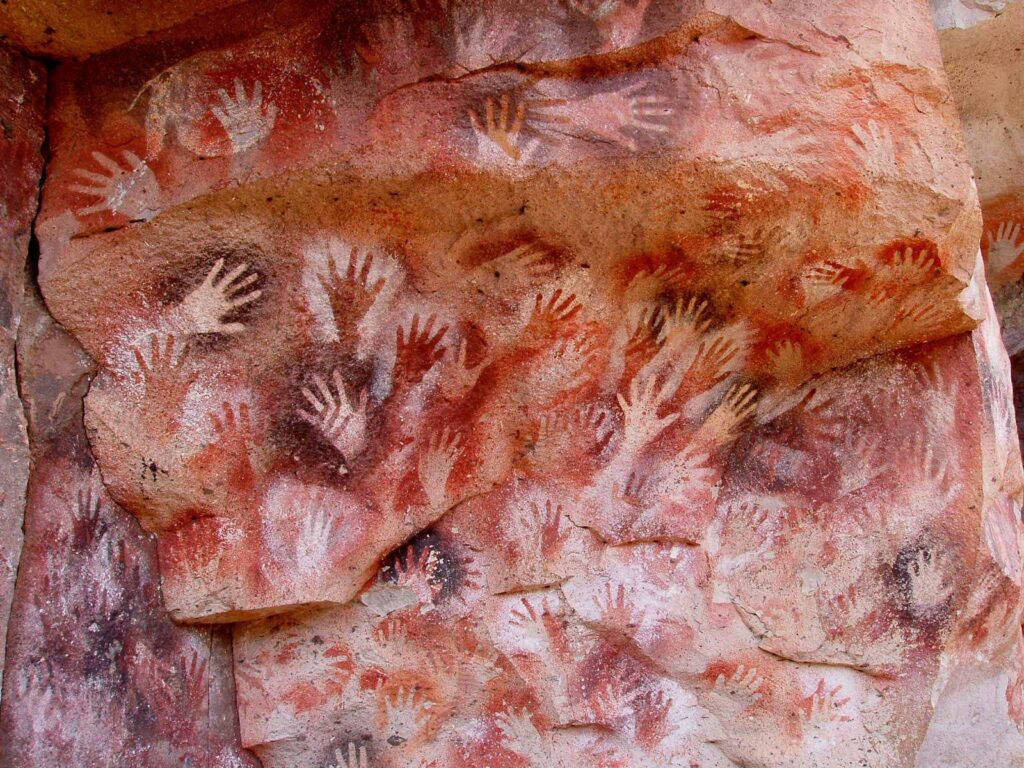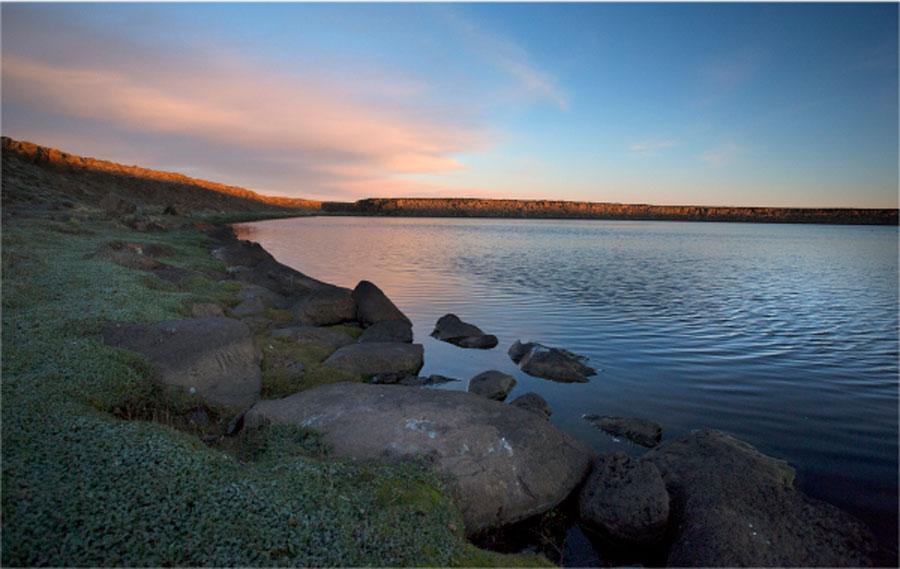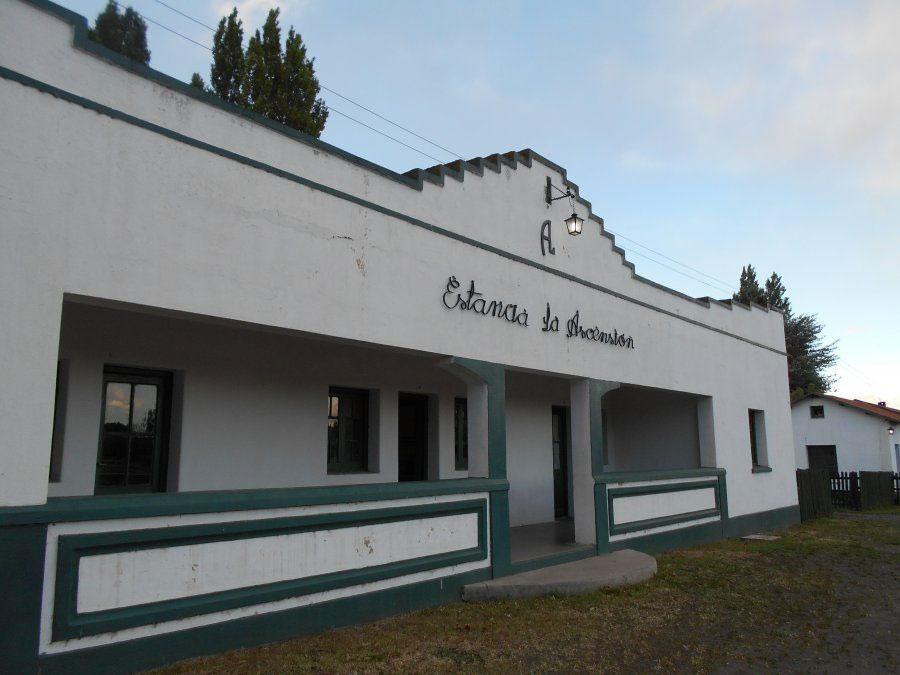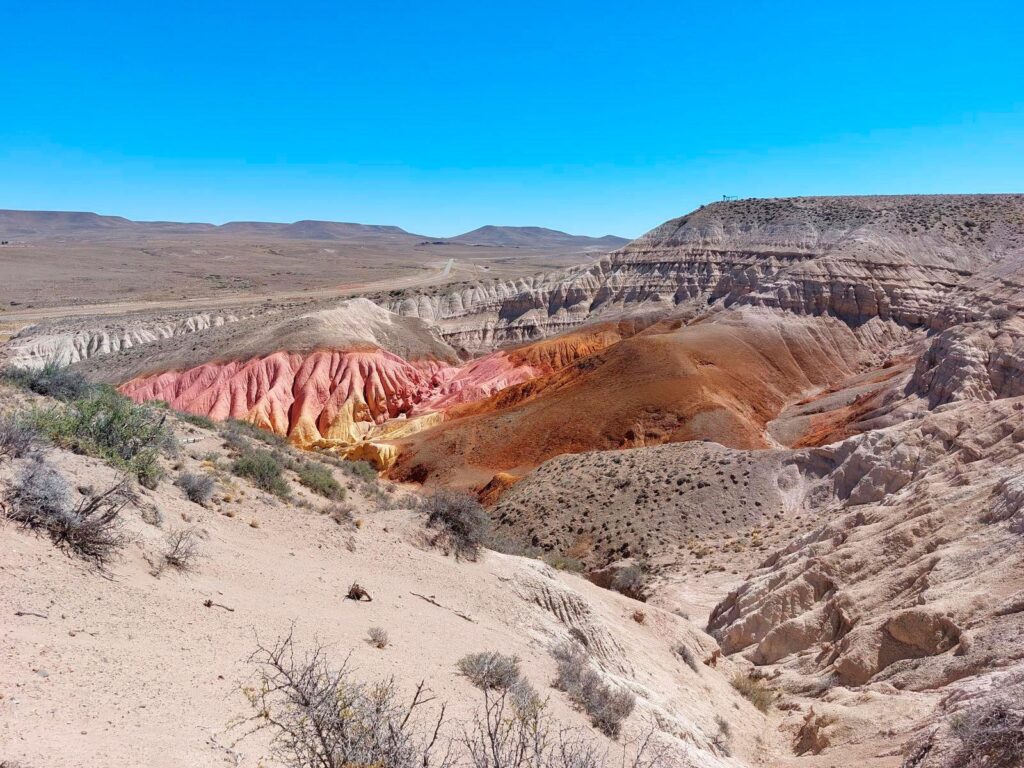Content
- 1 Introduction to General Carrera Lake / Buenos Aires
- 2 Geological Formation and Natural Characteristics
- 3 Climate at General Carrera Lake / Buenos Aires
- 4 Biodiversity: Flora and Fauna of the Lake
- 5 Tourist Attractions Around the Lake
- 6 Travel Guide
- 7 Conservation and Sustainability
- 8 Photography and Bird Watching
- 9 Excursions from General Carrera Lake / Buenos Aires
- 10 Photo Gallery
Explore Argentine and Chilean Patagonia and discover the fascinating General Carrera Lake / Buenos Aires, also known as Lago Chelenko. This captivating destination will immerse you in an unforgettable experience, enveloping you in its breathtaking natural beauty, rich biodiversity, and awe-inspiring landscapes that leave you breathless.
Introduction to General Carrera Lake / Buenos Aires
Lake Description
Known as the lake with two names, General Carrera Lake in Chile and Buenos Aires Lake in Argentina is one of the largest lakes in South America, offering truly astonishing panoramic views. Its turquoise and crystal-clear waters reflect the majestic Andean peaks, creating an unforgettable sight.
It is an impressive lake located in the Patagonia region, shared by Chile and Argentina. Its uniqueness lies in the fact that on each side of the border, it has different names, internationally recognized as Lake Buenos Aires in Argentina and General Carrera Lake in Chile (officially since 1959). It is also known by its indigenous name, Chelenko, which in Aonikenk means "stormy waters."
With a total surface area of 1850 km², of which 978.12 km² are in the Chilean region of Aysén del General Carlos Ibáñez del Campo, and the remaining 880 km² belong to the Argentine province of Santa Cruz, this lake becomes the largest lake in Chilean territory and the second largest in Argentina.
Geographical Location
Located in the Patagonia region, the lake stretches on both sides of the border between Argentina and Chile, surrounded by a landscape of mountains, forests, and glaciers. It can be geographically located by the coordinates 46°26′15″S 71°42′54″W. The coastal cities of the lake include Chile Chico, Puerto Ingeniero Ibáñez, Puerto Guadal, and Los Antiguos.
Situated in the Aysén del General Carlos Ibáñez del Campo Region and Santa Cruz and a subdivision of the Lago Buenos Aires Department (Argentina) and General Carrera Province (Chile).
Area History
The region around the General Carrera Lake / Buenos Aires has been home to various indigenous communities throughout history. In recent years, it has gained popularity as a tourist destination due to its natural beauty and unique attractions.
The shores of General Carrera Lake / Buenos Aires began to be inhabited by Argentine, Chilean, and European settlers in the early 20th century. However, in 1971 and 1991, the eruption of the Hudson Volcano wreaked havoc in the area, which relied primarily on sheep farming.
This area also holds significant cultural and archaeological importance, as it was inhabited by the Tehuelche people in the past. According to a recent study conducted in 2017 by the National Indigenous Development Corporation (CONADI) in Chile Chico and its surroundings, oral accounts of the first settlers arriving in the area were found, including families of Mapuche origin in the year 1896.
Buenos Aires Lake has an area of nearly 1900 km² and is surrounded by lowlands in the eastern part, which belongs to Argentina, and high, forest-covered shores in the western section, which belongs to Chile. The basin’s surface is about 4000 km², and it has a maximum depth of 590 m (the 11th deepest lake in the world).
It is located at an altitude of 227 meters in the Andes mountain range. The lake drains to the southwest through a river about 300 meters long and flows down to Lake Bertrand, on whose shores, along with the shores of Lake Buenos Aires in the Chilean section, there are approximately 150 km² of land suitable for agriculture and livestock, according to Luis Risopatrón’s description in his Geographical Dictionary of Chile (1924).
Geological Formation and Natural Characteristics
Lake’s Geological Formation
Its origin dates back to the glacial era, where huge glaciers carved out this deep lake. The diverse and fascinating geology of the area includes not only the lake but also impressive marble caves and unique rock formations. The tributaries are Soler, Los Antiguos, Jeinemeni, Ibáñez, San Martín, Murta, and Leones (or Delta). Its outflow is Lake Bertrand in Chilean Patagonia.
Water Features and Quality
The lake is known for its crystal-clear and deep blue water, a result of glacier meltwater and mineral accumulation. Its quality and purity are exceptional, contributing to the health of the local ecosystem.
Local Ecosystems and Biodiversity
General Carrera Lake / Buenos Aires hosts rich biodiversity, including a wide variety of flora and fauna. This biological diversity is vital for the ecological balance of the region.
Climate at General Carrera Lake / Buenos Aires
Seasons and Weather Conditions
The climate varies significantly depending on the season, ranging from very cold and windy to generally warm and sunny during the summer (December to March). However, winters can be very cold, with snow in the nearby mountains.
Best Time to Visit
The best time to visit the lake is during the austral summer when the weather is warmer, and conditions are ideal for outdoor activities such as hiking and fishing.
Biodiversity: Flora and Fauna of the Lake
General Carrera Lake / Buenos Aires is home to exotic flora, with beautiful pure lenga forests that create a charming environment. Regarding fauna, the area hosts a variety of native species, including eagles, cachañas, condors, guanacos, huemules, pumas, and foxes. These animals contribute to the richness and diversity of the ecosystem.
Wildlife Observation
Opportunities for observing wildlife are abundant, with species ranging from guanacos and condors to the rare huemul, an endangered type of deer.
Vegetation Around the Lake
The vegetation around the lake is diverse, ranging from dense lenga and ñire forests to meadows filled with wildflowers during spring and summer.
Population and Economy of the Surrounding Region
Despite challenging climatic conditions, the area has an established human population along its shores. On the northern shore, in Chilean territory, you’ll find the town of Puerto Ingeniero Ibáñez, while on the southern shore, Chile Chico is situated. These communities benefit from a milder microclimate compared to the surrounding environment, which has enabled their establishment and development.
On the Argentinean coast, you’ll find the town of Los Antiguos, bordering Chile Chico and being the oldest in the area. Additionally, the city of Perito Moreno is located a few kilometers inland. These human settlements are a testament to people’s adaptability and perseverance in the face of the challenging climatic and geographical conditions of the region.
Regarding the economy, the area around the lake is primarily based on tourism and agriculture-related activities. The tourism boom has been driven by the opening of the Carretera Austral in Chile, which directly connects the region with the rest of the country. This has allowed a greater influx of visitors interested in exploring the natural beauty and attractions of the lake and its surroundings.
Furthermore, agriculture plays a significant role in the local economy. The region is known for fruit production, especially cherries, and has fertile land that allows for the cultivation of various agricultural products.
In terms of ecology, General Carrera Lake / Buenos Aires and its surroundings are of great importance. The Baker River basin, which includes the lake, is one of the most biodiverse regions in Patagonia. Its waters host a variety of aquatic species, while its forests and surrounding lands are home to a wide diversity of flora and fauna. The conservation and protection of this rich ecology are essential for preserving the natural beauty and ecological balance of the area.
Tourist Attractions Around the Lake
Marble Cathedrals
The Marble Cathedrals are one of the main tourist attractions of the lake. These stunning rock formations consist of a group of marble caves that have been eroded by the lake’s waters over thousands of years.
Hiking and Trekking Routes
There are several hiking routes that offer panoramic views of the lake and its surroundings. Whether you prefer a leisurely hike or a challenging trek, there is a route for all fitness levels.
- Hiking Route to Marble Cathedrals: leads you through stunning scenery to the famous Marble Cathedrals. The trail offers panoramic views of the lake and its surroundings as you immerse yourself in the pristine nature. You can explore the fascinating rock formations and marvel at the unique beauty of the marble caves eroded by the lake’s waters over thousands of years.
- Trekking Route to Mount San Valentín: for the more experienced adventurers, this challenging route takes you to the summit of Mount San Valentín, the highest mountain in the Patagonian region. During the trek, you’ll encounter spectacular landscapes, majestic glaciers, and dazzling alpine lakes. As you approach the summit, you’ll be rewarded with unforgettable panoramic views of the lake and the surrounding mountains.
These hiking and trekking routes are just a few of the many options available in the General Carrera Lake / Buenos Aires area. Whether you’re looking for a leisurely walk to enjoy nature or an exciting challenge in the heights, you’ll find a suitable route where you can admire the scenic beauty of the lake and its surroundings.
Fishing and Water Activities
The lake is a popular spot for sport fishing, especially for trout and salmon. Other water activities such as kayaking and paddleboarding can also be enjoyed.
Scenic Lookouts
There are several scenic viewpoints around the lake that offer breathtaking views of the water, mountains, and surrounding forests. Don’t forget to bring your camera to capture these unforgettable landscapes.
Exploration of Marble Caves and Caverns
In addition to the Marble Cathedrals, there are other marble caves and caverns to explore. These unique geological formations offer an exciting adventure for nature enthusiasts.
Travel Guide
How to Get There
The lake is accessible by road from the nearby cities of Balmaceda in Chile and Los Antiguos in Argentina. There are also flights available to these destinations from larger cities.
Accommodation and Local Services
In the vicinity of General Carrera Lake / Buenos Aires, there are numerous accommodations that offer a variety of options to meet the needs of visitors. Whether you prefer a cozy stay in a cabin or a luxurious lodge with all the amenities, you will find options to suit all tastes. Some of the nearby and recommended accommodations include:
- Cabañas del Lago: This cabin complex offers comfortable accommodation with beautiful views of the lake. The cabins are fully equipped and feature modern amenities for a pleasant stay.
- Lodge Patagonia: Located in a spectacular natural setting, this lodge offers stylish rooms and high-quality services. With its privileged location, you can enjoy breathtaking views and easy access to outdoor activities.
- Hostería Los Antiguos: Located in the town of Los Antiguos, this inn offers comfortable and cozy rooms. Its peaceful and friendly atmosphere will allow you to enjoy a relaxing stay while exploring the charms of the area.
- Hotel Perito Moreno: In the city of Perito Moreno, this hotel offers comfortable rooms and quality services. With its convenient location near the lake, it is an ideal choice for those who want to explore the surroundings.
Meals and Local Dishes to Try
The region is known for its delicious cuisine, which includes Patagonian lamb, fresh lake trout, and local fruits such as cherries.
Regulations and Recommendations for Visitors
Visitors must follow all local regulations to protect the lake’s ecosystem. This includes not littering, not making fires, and staying on marked trails.
Conservation and Sustainability
Local Conservation Efforts
There are several conservation efforts underway to protect and preserve the lake’s ecosystem. This includes environmental education programs and reforestation projects.
Tourism’s Impact on the Local Ecosystem
While tourism brings economic benefits to the region, it can also have a negative impact on the environment. Visitors are encouraged to practice responsible tourism to minimize their impact.
How Visitors Can Contribute to Conservation
Visitors can contribute to the conservation of the lake in various ways, such as participating in beach cleanup activities, donating to local conservation organizations, and following park rules.
Photography and Bird Watching
Best Places for Photography
The lake and its surroundings are a paradise for photographers, with many locations to capture stunning images. The Marble Cathedrals are particularly photogenic, especially at sunrise and sunset. Additionally, the various viewpoints around the lake offer panoramic views ideal for landscape photography.
Bird Species to Watch
The lake is a great place for bird watching, with several species inhabiting the area, including the majestic Andean condor. It is recommended to bring good binoculars and a bird guide to make the most of the experience.
Excursions from General Carrera Lake / Buenos Aires
If you’re looking for nearby destinations and what to see near General Carrera Lake, you can’t miss Patagonia National Park, a must-visit.
If you wish to explore Argentina, at a distance of about 750 km, you’ll find the stunning Los Glaciares National Park. Here, you can see some of the most impressive glaciers in the world, including the famous Perito Moreno Glacier. If you go, another point of interest is the town of El Calafate, a charming place known as the gateway to Los Glaciares National Park. Here, you can enjoy a variety of activities, from hiking to visits to sheep farms, as well as a vibrant culinary scene.
Trekking in Mount Fitz Roy
For trekking enthusiasts, Mount Fitz Roy offers some of the best trails in the region. The views from the summit are absolutely stunning, but it requires a good level of physical fitness to get there.






